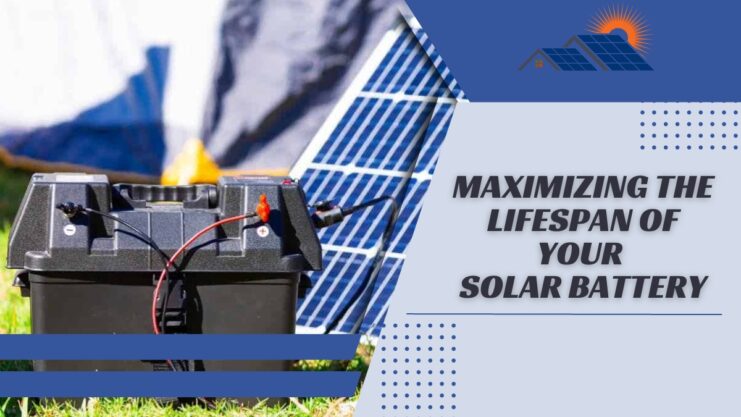For many homeowners, one of the most attractive features of solar energy is its ability to produce reliable power for a long time. Solar batteries last for years, but their effectiveness can vary based on a variety of factors and should not be taken for granted. In this guide, we’ll discuss what these factors are and how they affect the lifespan of solar batteries. We will also provide information on how to maximize the life of your batteries so that you can get the most out of your solar system.
Solar batteries typically last 10-15 years, although it’s possible to extend their life if they are well cared for and maintained. However, it’s important to be aware that some environmental conditions can shorten the lifetime of your battery – such as extreme heat or cold or fluctuations in voltage or current.
Properly setting up your solar system before installation can help mitigate these issues and ensure that you receive optimal performance from your system over time. Additionally, taking steps such as regularly cleaning connections or inspecting terminals will help extend the lifespan of your battery.
Battery Types
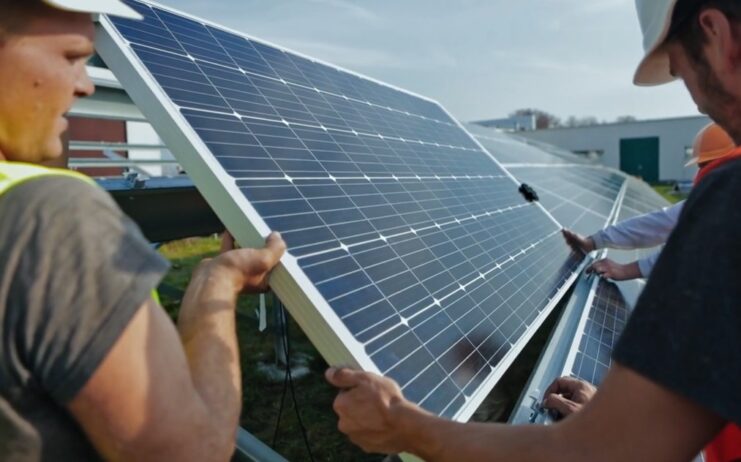
They come in a variety of types to match the needs and budget of any customer. Depending on the type of battery, they can have different lifespans and performance characteristics.
Common types include lead-acid, lithium iron phosphate, and Nickel-Metal Hydride (NiMH). Each of these will be discussed in detail in the following section.
Lead-Acid
They are the oldest and most common rechargeable battery type for solar systems. Lead-acid batteries have some significant advantages and disadvantages over other technologies, making them ideal for some applications and far better than others.
Lead-acid chemistry is composed of two groups of plates stacked inside a container filled with electrolytes — sulphuric acid and water. They are composed of “flooded” cells, meaning they hold a reservoir of liquid electrolytes that is freely available on the surfaces of the plates. Flooded cells must be maintained with periodic watering — topping off levels if necessary — to keep the plates submerged in sufficient liquid for optimal performance. The time between waterings varies by about 10 days depending on cell temperature and charged/discharged state.
They are popular for off-grid applications because they have a lower upfront cost compared to other chemistries, but have shorter useful life than some other technologies. Depending on operating temperatures, load requirements, and charging rates, lead-acid batteries typically last between 4 to 8 years when used in solar-powered systems. In addition, lead-acid batteries require more maintenance than other technologies such as lithium-ion or NiCd types.
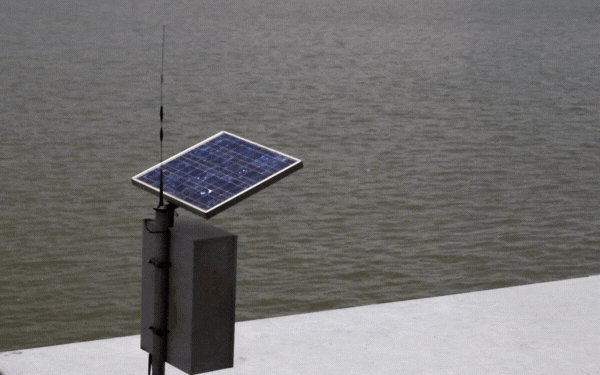
Lithium-Ion
They are the most cutting-edge type of solar storage battery available. They offer a great balance of affordability, performance, and lifespan, making them a top choice for most home energy storage applications.
Lithium-ion batteries are composed of two electrodes (anode and cathode) and a lithium salt electrolyte. The benefit of this type of chemistry is that it is more energy-dense than other chemistries like lead acid or flooded batteries. This means that you can store more energy in the same amount of space — an important consideration for homes with limited storage space.
Additionally, Lithium-ion cells are highly efficient, meaning that very little energy is lost in the process of charging and discharging them. This helps to maximize your solar power system’s efficiency and save money on your bills by reducing waste. Lithium-ion cells also have low self-discharge rates, meaning they will retain their charge over time with minimal “leeching” or self-discharge.
Finally, they generally have longer lifespans than other types — typically 8 to 10 years should be expected from a good quality lithium-ion battery — making them the ideal choice for long-term energy storage needs.
Factors Affecting Battery Life
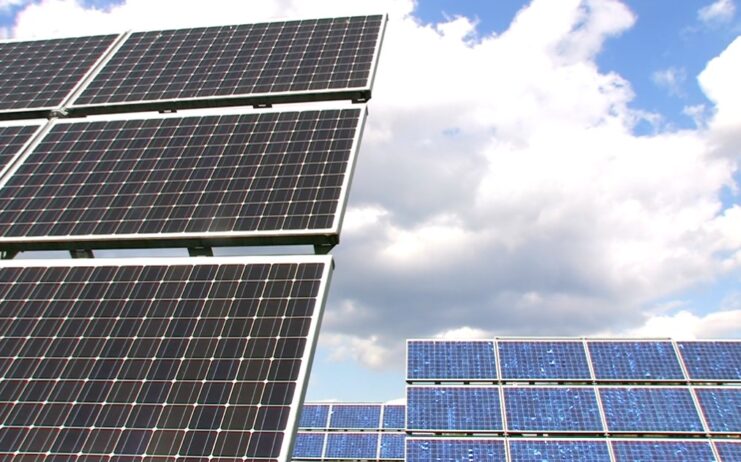
They are an integral part of any solar power system, and it’s important to understand the factors that affect their lifespan. Some of the factors that have an impact on battery performance include the number of charge and discharge cycles, environmental conditions, and the type of battery.
Let’s explore the various factors that influence solar battery life.
Quality
The quality of the battery is one of the most important factors when assessing solar battery life. When purchasing batteries, it’s important to understand the difference between cheap and more expensive batteries. Typically, cheaper solar batteries will have a shorter lifespan and may require more frequent replacements than higher-end batteries. The characteristics of a good quality battery are:
- High capacity: The capacity of a battery is its total energy storage capacity. A good quality battery has a high energy density, meaning it can store more energy per unit of volume or mass — making it ideal for solar applications.
- Low self-discharge rate: This is the rate at which stored charge in a cell or battery dissipates over time due to internal changes within the cell itself. Ones with low self-discharge rates can hold their charge for extended amounts of time and sustain their state of charge better than those with high self-discharge rates.
- Longer shelf life: Ones with long shelf lives can be stored for longer periods without significant degradation in performance or capacity (due to age). Good quality solar batteries should also be able to withstand temperature fluctuations and maintain their initial performance over an extended period of time (e.g., through multiple recharge cycles).
Choosing high-performing, well-made products will give you extended service life and reduce your overall initial cost by providing a better return on investment (ROI) in terms of uptime, longevity, energy efficiency, etc., thereby increasing your system’s performance level as well as lowering maintenance & replacement costs while prolonging your system uptime.
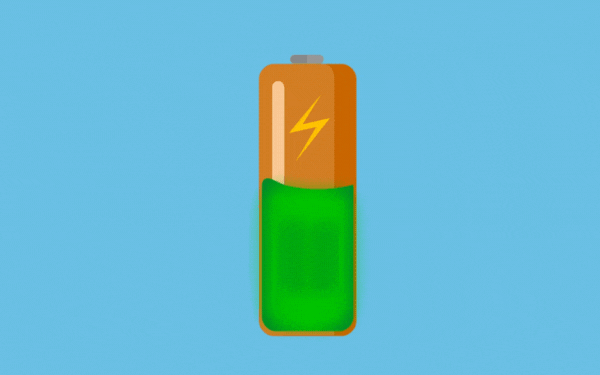
Size
The size of the battery cell is directly proportionate to the amount of energy it can store and release, and therefore to its capacity. The larger a battery cell is, the more energy it can store, which in turn results in longer battery life.
Using two identical batteries with two different sizes (cell number, for example) will show that the larger one will last longer on a single charge than its smaller counterpart. Additionally, bigger batteries generally mean better performance since they can theoretically hold more charge).
Usage
The total life cycle of your battery is largely affected by how you use it. There are several factors to consider when assessing your power usage:
- The depth of discharge. This measures the percentage of your battery capacity being used at a given time. The deeper the discharge, the higher the internal pressures and temperatures, which can affect your battery life span in a negative way.
- The charging profile used to recharge batteries may also affect their lifespan. If you are using an electronic charger with a setting specifically created for deep-cycle batteries, this will help maintain their total life expectancy.
- Selecting the right size battery for your particular solar panel setup is also important; too big and you’ll overload, too small and it will be underutilized leading to failure.
- Finally, heat can play an important role in a battery’s health – make sure that any storage containers provide proper ventilation which allows heat to escape so that there is no overheating damage occurring over time to shorten its lifespan.
Maintenance Tips
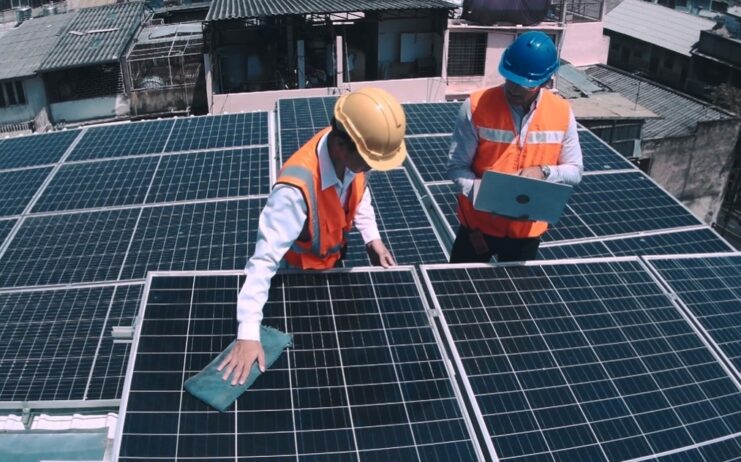
They are a great way to be energy efficient and save money on your electricity bills. However, their performance and longevity depend on how well they are maintained.
In this section, we will look at some maintenance tips to help you maximize the lifespan of your solar batteries. We’ll discuss everything from installation and cleaning to checking battery voltage.
Regularly Monitor Battery Levels
Solar batteries are now increasingly being used in residential solar installations as they provide a way to store the energy created by your solar panels so it can be used later when the sun is not shining. To get the most out of this form of energy storage, it is important to regularly monitor and maintain your solar batteries. This includes checking their state of charge, ensuring they are always charged on a regular schedule, periodically cycling them, and replacing them if needed.
Regularly monitoring your battery levels helps ensure that you are getting the best performance from your system. It will also allow you to identify any problems earlier so that costly repairs can be avoided. There are various methods for sensing battery levels including voltage measurement, impedance measurement, and end-of-charge (EOC).
Voltage measurements indicate whether the battery is full or empty while impedance measurements provide an indication of internal resistance which tells you how much energy remains in the battery. End-of-charge measurements tell you when the maximum capacity has been reached based on voltage, current or temperature readings.
It is also important to cycle your batteries regularly by charging them up and then discharging them down before recharging again at least once every three months. This helps maintain consistent performance and capacity over time – something which is especially important with lithium ion and lead acid batteries as they tend to degrade over time due to aging effects and sedimentation at the bottom of their cells respectively.
Finally, replace any solar batteries if necessary as soon as possible so that any unexpected faults do not put your system at risk or cost you more than necessary in terms of repairs or replacement parts down the line.
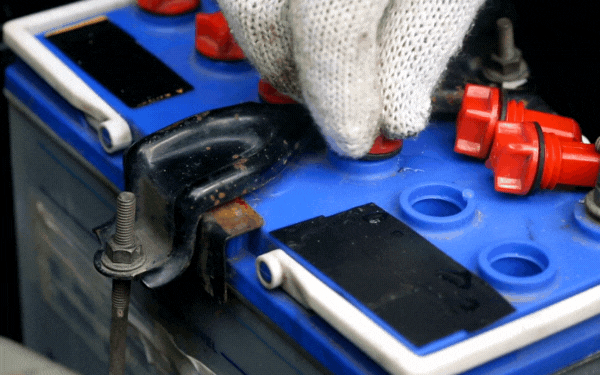
Avoid Overcharging
When electric current flows into your solar battery, it is converted into chemical energy. An excessive level of charging voltage can force the current too quickly, causing an excessive buildup of heat and gas pressure. This is known as “overcharging” and can lead to permanent damage to your battery. Therefore, it is essential to monitor and regulate the amount of energy that enters your battery.
To avoid overcharging, you should use charge controllers on larger systems or limit the time each day that your battery system is exposed to direct sunlight. For smaller batteries, a timer or voltage-sensing charge regulator should be used. Furthermore, it is important that your battery system be kept free from any dust or debris in order to prevent the accumulation of electrolytes on its surface and protect against damaging overcharges.
Additionally, make sure that you never leave a fully-charged battery connected to an external power source for an extended period of time as this could permanently damage it. Finally, follow the recommended charging cycle times stated in the instruction manual provided with each new solar system or battery pack you purchase.
Check for Corrosion
Periodic inspection and maintenance of your solar system are essential for keeping it running at optimal performance. One of the things you should check for is corrosion – this can build up over time on your connections, terminals, and wires and can cause serious damage if overlooked. Corrosion buildup from salts in the atmosphere can cause an increase in electrical resistance, resulting in higher temperatures, reduced current flow, and eventually complete failure.
To check for corrosion on a regular basis, inspect all of your electrical connections including battery terminals and wiring connectors. If any of these parts appear to be corroded or discolored, use a wire brush to clean them up and apply dielectric grease or silicone grease with each connection to help protect against future buildup.
Ensure that you wear protective clothing while doing maintenance work on your system as some parts may contain hazardous materials that can cause skin irritation or other harm if exposed to them directly. Finally, take caution not to short circuit any connected parts by accidental contact between metal components that could lead to personal injury or damage to the equipment due to electric shock hazards or fire potential.
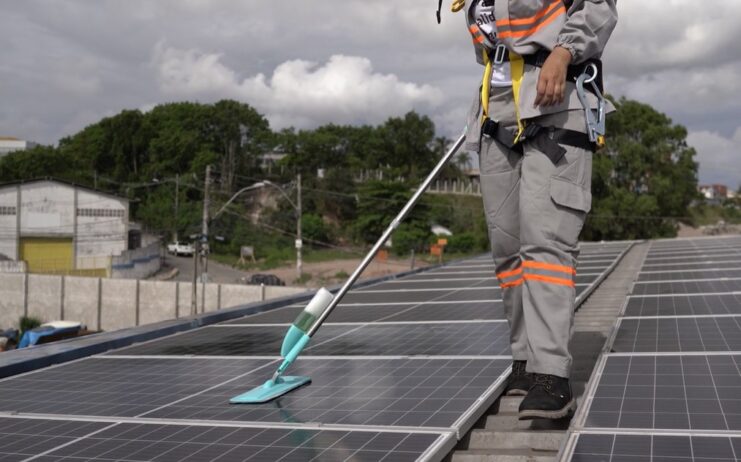
Keep Them Clean
Battery maintenance is a crucial part of ensuring the optimal performance and longevity of your solar batteries. While solar power is a clean and renewable energy source, regular maintenance and care for your batteries are still important for protecting your solar investment. Keeping them clean can help to prevent corrosion, reduce energy loss, and extend the life of your system.
The key to keeping your batteries in good condition is to clean them regularly. Corrosion can build up on battery terminals over time, leading to reduced performance, decreased charging capacity and even potentially damaging short circuits. To avoid this, it’s important to periodically inspect, clean, and protect the terminals of all lead-acid batteries used in solar systems.
A general cleaning solution with baking soda and water can be used to keep the terminals free from corrosion by removing any acid buildup. When cleaning around solar battery terminals, it’s best to wear safety glasses and protective gloves as chemical reactions between cleaners or corrosive buildups can cause harm or health hazards if present in high concentrations. Additionally, proper storage within an enclosed space (such as an insulated garage) can help reduce contact with moisture which could otherwise create dangerous electrical hazards or shorten battery life due to accelerated oxidation or dehydration over time.
FAQs
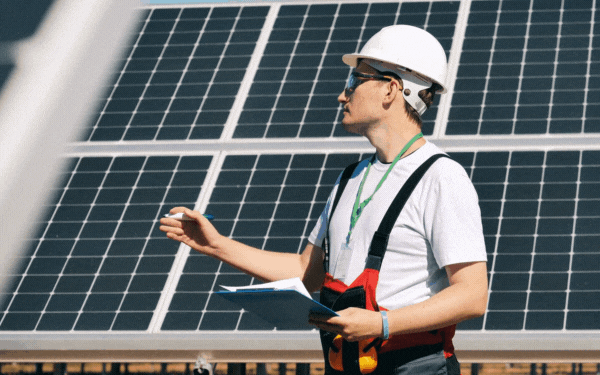
Can I extend the lifespan of my solar battery?
Answer: Yes, you can extend its lifespan by properly maintaining it and avoiding overcharging or deep discharging it.
How do I know when my solar battery needs to be replaced?
Answer: You can tell when it needs to be replaced by monitoring its performance and capacity. If it is no longer holding a charge or is significantly reducing its capacity, it may need to be replaced.
Can I use any type of solar battery with my solar panel system?
Answer: No, you cannot use any type of solar panel system. It must be compatible with your solar panel system.
How often should I charge my solar battery?
Answer: You should charge it as often as needed to maintain its charge level. This may vary depending on your energy usage and the weather conditions.
What is the average capacity of a solar battery?
Answer: Its average capacity is between 5-20 kWh.
Can I connect multiple solar batteries together?
Answer: Yes, you can connect multiple solar batteries together to increase the storage capacity of your solar panel system.
Can solar batteries be recycled?
Answer: Yes, solar batteries can be recycled to recover valuable materials and prevent environmental pollution.
How much do solar batteries cost?
Answer: It varies depending on its capacity, type, and brand, but generally, it can cost between $500 to $5000.
Can I install it myself?
Answer: It is recommended that you hire a professional to install it to ensure that it is installed safely and correctly.
Can I use my solar battery during a power outage?
Answer: Yes, you can use it during a power outage to power essential appliances and devices.
Can I store my solar battery outside?
Answer: Yes, you can store it outside, but it is recommended to protect it from extreme weather conditions.
How long does it take to charge a solar battery?
Answer: The charging time for it varies depending on its capacity, charging method, and weather conditions.
How do I dispose of my solar battery?
Answer: You should dispose of it properly by recycling it or taking it to a hazardous waste disposal facility.
Conclusion
Its life expectancy can vary widely depending on the type and size of the battery. Some batteries, such as lead-acid AGM batteries, can last up to 15 years if they are properly cared for. Lithium-ion batteries usually last five to eight years, while nickel-cadmium batteries can last up to ten years.
In addition to proper care and maintenance, it’s important to understand the parameters of your particular battery in order to maximize its lifespan. Factors such as temperature, proper charging and discharge cycles, voltage levels, and types of loads all affect how long solar batteries will last. Overall, careful selection and maintenance will ensure that you get the longest life from your solar battery system.

